FEATURE
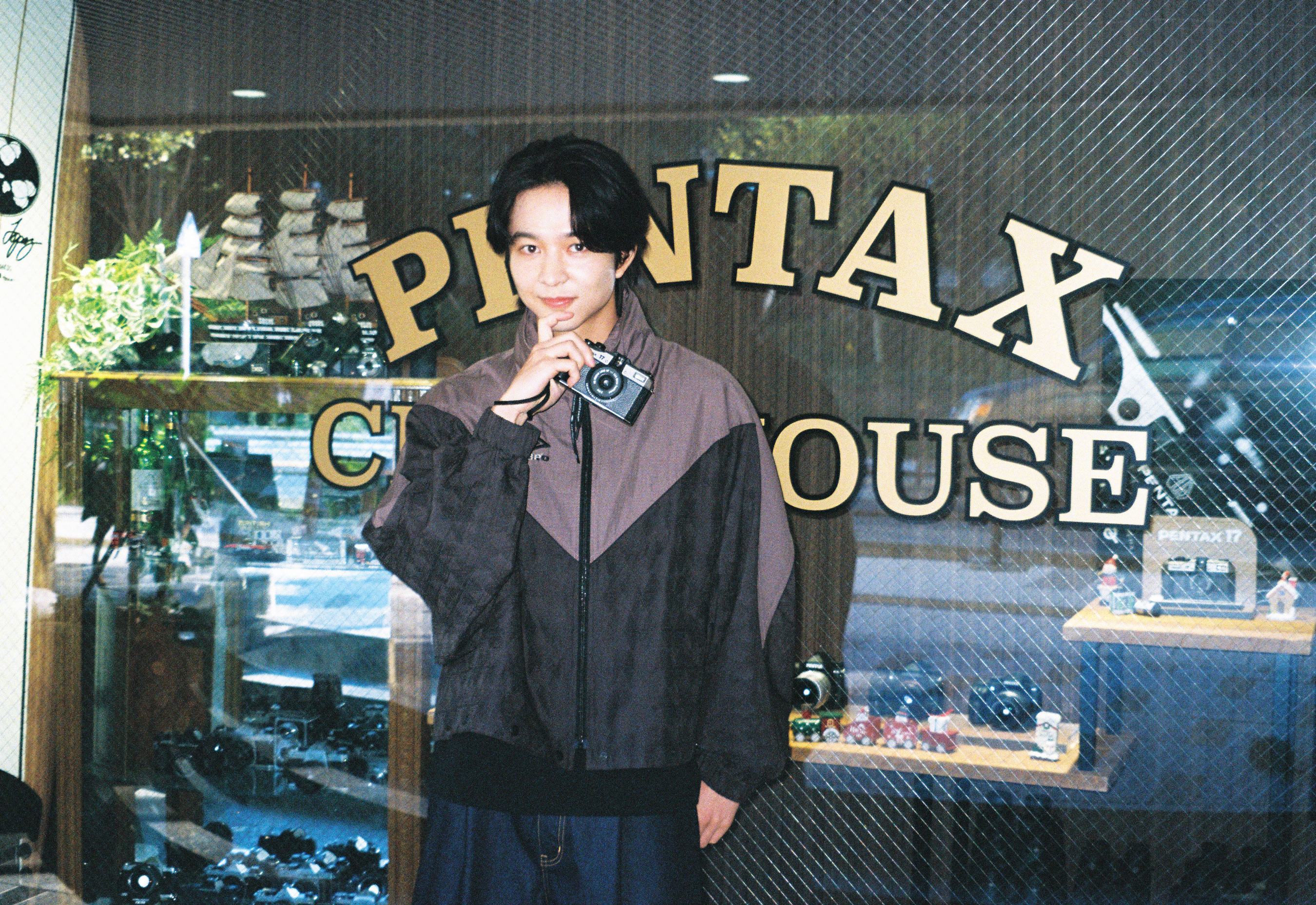
Short series PENTAX Film Project Club House Diary vol.10 Guest: JIN SUZUKI
JAN. 23 2025, 11:00AM
Photographs and text / Melanie Tada
Styling / Kazuyuki Tamura
Hair and makeup / Ayaka Sugai
BARFOUT!: This is the first time that an actual user of the “PENTAX 17” has joined us in this series since it was released, and the entire PENTAX team has been eagerly awaiting your appearance.
Suzuki: I was very happy to hear from you as well. I pre-ordered the “17” immediately after the pre-order started at the store, and although I wasn’t able to get one from the first batch in time, I was able to finally get my hands on one when the next batch of shipments came in. My favorite photo is the one I took while walking back to the train station from the store, after putting the film in on the spot because I couldn’t wait to try it (see picture (3) below). I was lucky because the half-frame camera was the only type of film camera I didn’t have and information about the release of this model came out right around the time I was thinking about wanting one.
BARFOUT!: We were able to borrow some photos that you personally took with your “17,” and we were impressed by the way you used it in various situations, all of which were very lovely. What were your impressions after actually using the camera?
Suzuki: It’s really fun. I was not familiar with the zone focus because I usually use the “Nikon F” and “F2” cameras. The PENTAX 17 is a camera that allows you to take snapshots while walking around. So, getting a good feel of the distance was a little difficult until I got used to it, but there is an auto mode that allows you to take pictures with ease (using a pan-focus mechanism with a fixed focus point) , and there are many functions you can choose from depending on the location, so I have really been enjoying it.(Click here for more “PENTAX 17” information)
TKO: Thank you. You’ll become more comfortable with determining the zone from a distance the more you get used to it, so I think it will become easier as you get more familiar with it.
Suzuki: I have gotten much more used to measuring distances by eye. In the beginning, I made a lot of mistakes, but I thought the blurriness and out-of-focus look was surprisingly not too bad. I usually load a 36-shot film, so with a half-frame camera, I can take 72 shots. I can take each shot carefully while also snapping shots as boldly as I want.
Iikawa: Even if you take the first few pictures slowly and carefully, when you get into the mood, you start taking them more and more rapidly. Because there are 72 shots, it’s just the right number of shots for snapping pictures in quick succession, and it also makes it seem like it’s okay to make some mistakes.
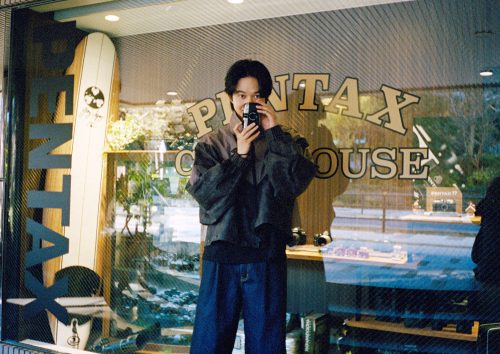
Suzuki: I enjoy climbing mountains for fun, and I take pictures when I’m climbing with friends and along the way, but most of the time it’s just a day trip, so it’s just the right number of shots to finish a roll of film. And the strap that comes with it is also very useful. The grip is very comfortable to hold, and although I didn’t attach the strap at first because I didn’t think I would drop the camera, it feels reassuring when it is attached, and most importantly, it is very helpful to be able to get a feel of what the distance of 25 cm is by the length of the strap.
BARFOUT!: Many of the photographers who cooperated with us previously mentioned the usefulness of the strap.
TKO: That’s so nice to hear. How did you like the manual winding mechanism?
Suzuki: I like the feel of winding it. The reason I became interested in cameras was the “PENTAX MZ-L” that was lying around my parents’ house, so I am used to handling it and I like the sounds it makes. But I still think that the weight of each shot and not being able to take continuous shots are what makes manual winding so great.
TKO: I have experience using new manual-winding film cameras, but now you can only get them used, and I am sure the movement and sound was smoother when they were new. Of course, it’s nice when a camera ages well and develops its own unique look, but I thought it would be very significant to be able to enjoy the manual-winding mechanism with a brand-new camera. That’s why I wanted to revive film cameras again, and I wanted people who were using them for the first time to touch and feel them, and see what a new manual winding camera is like.
Iikawa: Hand strength varies from person to person, and while some people may wind it slowly and others quickly, because it’s done manually and not controlled electronically, it’s surprisingly difficult to adjust the strength and usability of the camera. The inside of the plate, which winds up and counts the number of shots one by one, is also complicated because it is mechanically operated rather than electrically operated. We were also very particular about the loudness of the winding sound.
Suzuki: Yes, I really like the sound of the winding, and sometimes I turn it slowly to listen to the sound (laughs). I have a friend who is the same age as me who is a photographer, and whenever I have my “17” with me, he asks me to let him hold it, and he usually winds it slowly. I feel that the sense of the camera fitting comfortably in my hand and the way the sound fits in are very well matched. And, not to repeat what I said earlier, but it would be nice if even people who haven’t had much experience with cameras yet could easily take pictures on auto. Even the younger generation is familiar with “Utsurundesu,” right? Even if you don’t have the knowledge to adjust the focus, you can easily explain that you can take pictures in auto mode, almost the same as with “Utsurundesu,” and it is amazingly user-friendly and accessible to everyone.
Iikawa: Actually, Takeo and I both use auto a lot, and it is fun to be able to take pictures without worrying about exposure, etc. and leave it completely up to the camera. By the way, what kind of film do you usually use?
Suzuki: For a half-frame camera, I often use (ISO) 200 or something like that. I think it’s the easiest to match.
TKO: Although it is a bit more expensive, you should also try reversal (positive) film.
Suzuki: I actually happen to have some positive film at home so maybe I’ll give it a go. Does it suit black and white photography?
Iikawa: Yes, it does. With the “17,” you can also enjoy filter work to adjust the contrast of black-and-white.
Suzuki: There is still a lot to play with.
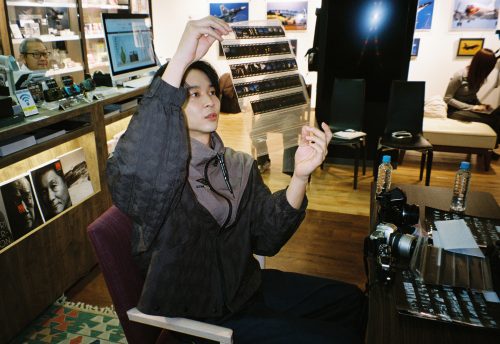
Iikawa: Now that the “17” has been completed, we are moving on to making our next camera, and we would love to hear your thoughts on what kind of camera you would like to see. In terms of design, are you attracted to classic models?
Suzuki: Yes, I do. I use the “F3” and I love its rugged, jet-black appearance. I know some people are concerned about the weight, but I consider the weight to be important to the camera, so I have no resistance to it at all. A new camera, well…… I myself have never used a twin-lens reflex camera, so when it comes out, I will definitely buy a camera that can be enjoyed by those who have not been exposed to it, but still retains the advantages of a twin-lens reflex camera. I’m a big fan of Vivian Maier, and I discovered the beauty of black-and-white photography through her photography books, so I have a desire to one day shoot with a twin-lens reflex camera.
TKO: We will use that as a reference! By the way, I heard that you have held several photo exhibition.
Suzuki: I hold one every year. I want to let people know about the beauty of photography in the relaxed atmosphere of a photo exhibition that I enjoy. 90% of the photos are of me taken by a photographer, but I also exhibited some of my own photos. It was nice to see that many people became interested in cameras as a result of my photo exhibition.
Iikawa: It would be fun to talk about your experiences during your photo shoots at such an event.
Suzuki: If the topic is cameras or photography, I could talk about it for an hour or two (laughs).
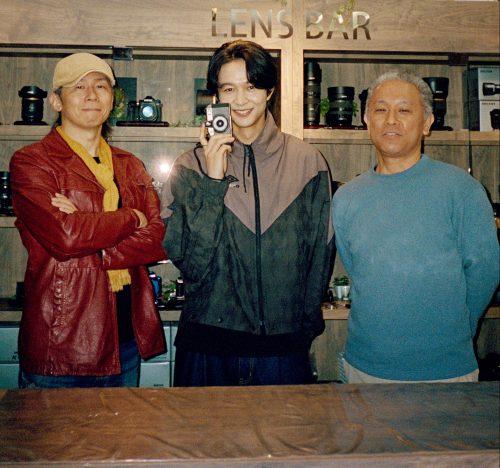
PHOTOGRAPHS BY JIN SUZUKI
①
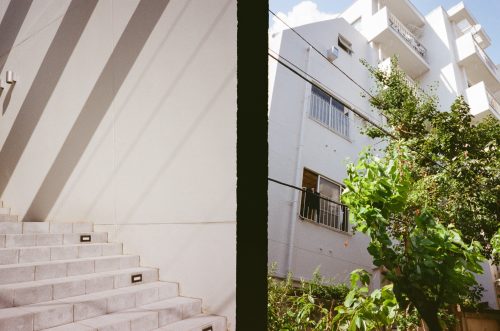
②
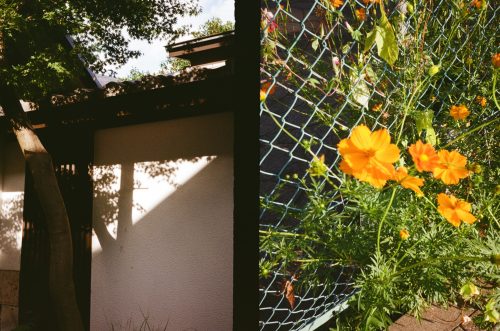
③
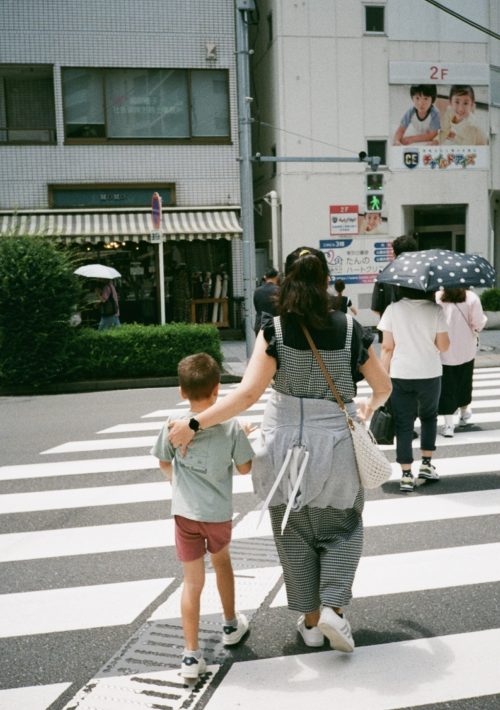
① “I feel that when the two photos of an ordinary scene taken while strolling through the city are placed side by side, it brings out the best of them.”
② “The contrast is nice just before dusk. The colors of the flowers turned out beautifully, and the fact that they were out of focus was a nice touch.”
③“This photo was from the very first film I used after buying the camera. I feel that this is one of the shots that will help you understand the lightness and texture of this camera.”
INFORMATION OF PENTAX
A video introducing the PENTAX “Film Camera Project,” and a website featuring articles from BARFOUT! are also available now.
【WEB SITE】
Product features of the PENTAX 17
ricoh-imaging.co.jp
About the Film Camera Project
ricoh-imaging.co.jp
【Instagram】
@pentax.jp
@pentax.film.photography
【X】
@ricohimaging_jp
INFORMATION OF JIN SUZUKI
He is currently working as an exclusive model for “MEN’S NON-NO” and an actor.
【WEB SITE】
amuse.co.jp/artist/A8815
【Instagram】
@jin_suzuki_722
【X】
@jin_suzuki722




